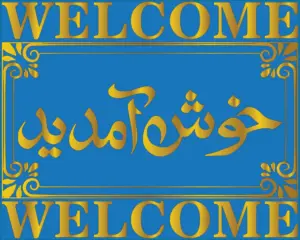Professional Urdu Translations Tailored to Your Needs
GTS provides high quality Urdu translation services using a tested team of native, in-country Urdu translators. We provide expert Urdu translation services in many areas including technical, chemical (MSDS), medical, legal, software, engineering and financial. We also translate from Urdu to English and between Urdu and over 70 other languages.
Your Documents in Urdu: Trusted Translations
We have translated hundreds of Urdu documents for our clients. We translate Urdu documents in any file format including PDF, MS Word, Powerpoint, Excel, Adobe InDesign and Framemaker. For excellent quality in professional translation services English to Urdu and Urdu to English, look no further than GTS.
Urdu Medical Translation Services
- Clinical protocols and protocol synopses
- Informed Consents
- Clinical trial agreements
- Instructions for Use for medical devices
- User manuals for medical software
- Study drug labels
- Case Report Forms (CRF)
- Localization of medical software
- Medical and hospital reports
Urdu Technical Translation Services
- Manuals and User Guides.
- RFP and RFQ documents, tenders and proposals
- Material handling documents
- Urdu translation of SDS
- Engineering documents, technical drawings
- Data sheets and web content
Urdu Legal Translation Services
- Contracts
- Legal agreements
- Affidavits
- Patents
- Court and litigation documents
Urdu Business Translation Services
- Translation of Brochures
- Business plans
- Financial reports, annual reports
- Product catalogs
Urdu Language Facts
Urdu is spoken by more than 230 million people worldwide, making it one of the most influential languages of South Asia. It is the national language of Pakistan and one of the 22 scheduled languages of India, where it holds official status in several states. Beyond South Asia, Urdu is widely used in diaspora communities in the Middle East, the United Kingdom, North America, and elsewhere. Written in the elegant Nastaliq script, Urdu is not only a language of government, business, and media but also a celebrated medium of poetry, prose, and cultural expression. For global organizations, Urdu translation is vital in fields such as law, healthcare, IT, finance, and technical documentation, ensuring accurate communication with a rapidly growing market.
Urdu Script and DTP Guidelines

Urdu is written from right to left, which makes it different from English and requires special attention in formatting. Professional translation projects must use Unicode-compliant fonts such as Noto Nastaliq Urdu or Jameel Noori Nastaleeq to ensure compatibility across digital platforms and avoid corrupted text. Because of the flowing calligraphic style of Nastaliq, line breaks and ligatures often need manual adjustment to prevent distortion. Urdu translations also tend to expand text length by 10 to 20 percent compared to English, so layouts should be designed with flexibility in mind. Hyphenation should generally be avoided, as splitting words can cause errors in meaning. While software like InDesign, FrameMaker, and MS Word support Urdu, the final output should always be proofed carefully, particularly for bilingual documents where English and Urdu must align correctly in tables, forms, or packaging.
From the GTS Blog
6 Reasons Your Company Should Expand to Southeast Asia

